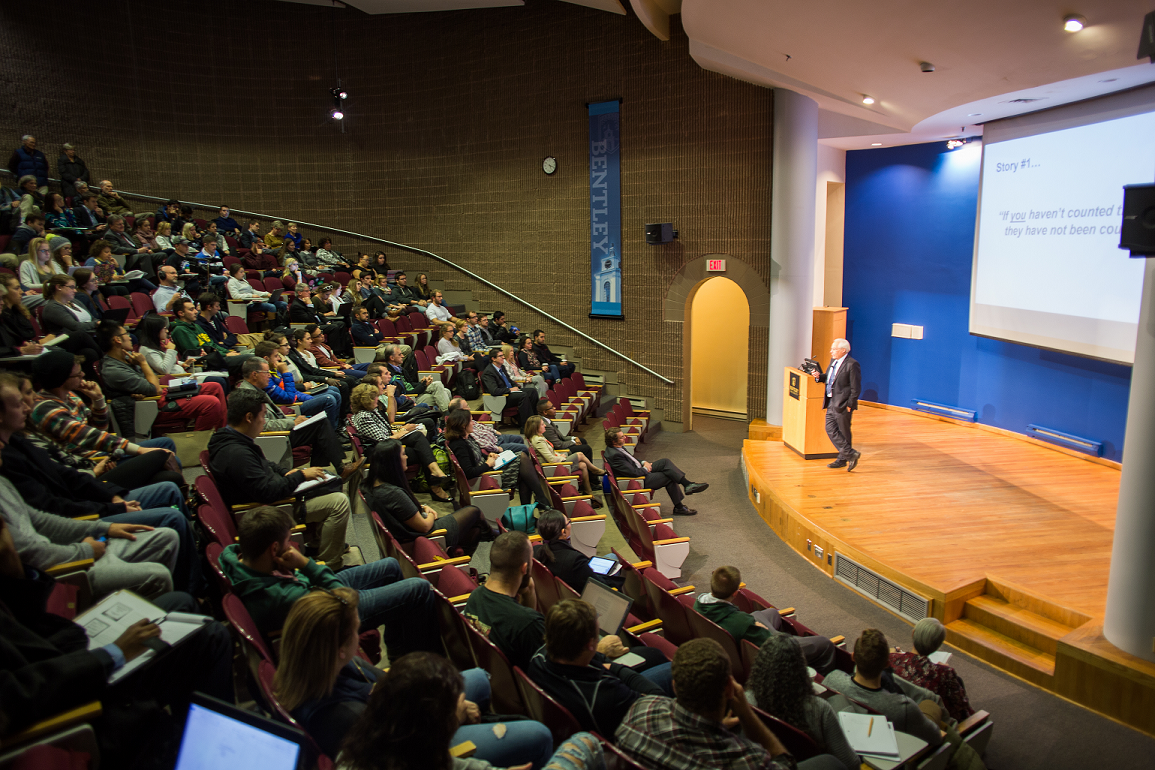
The challenges facing our national healthcare system are undoubtedly among the most pressing concerns of our nation. With an aging population, healthcare costs escalating, and patient need increasing, we must look more than ever to innovative solutions.
So what can a university do to prepare tomorrow’s future business leaders to help reform the healthcare system?
Dr. Donald Berwick, president emeritus and senior fellow at the Institute for Healthcare Improvement, raised this question to Bentley students, faculty and staff at a recent forum. A former administrator of the Centers for Medicare & Medicaid Services, as well as a member of President Clinton’s advisory commission on Consumer Protection and Quality in the Healthcare Industry, Dr. Berwick shared his perspective on the most pressing issues.
“Bringing Don Berwick to Bentley to have this important conversation helps our students see that they can have a positive impact on this issue through a variety of business roles that exist within the healthcare sector. Improving our healthcare system is not just a task for the brightest medical minds, but for the next generation of business leaders and innovators,” said Danielle Hartigan, assistant professor of Natural and Applied Sciences and principal investigator of the Bentley Health Thought Leadership Network - an interdisciplinary group of faculty whose goal is to utilize the strengths of a business university to advance meaningful health research.
Improving healthcare isnt just for medical minds but for the next gen of biz leaders @danielleblanch
TWEET THISDr. Berwick shared his thoughts on the business of healthcare reform, how it came to be, what the movement looks like today, and where it should be going in the future – as well as the impact a business university can have on improving population health, the care experience, and the overwhelming cost of care.
Why a business university and its students should be invested in healthcare reform:
1. Healthcare is a key piece of the U.S. economic puzzle.
The U.S. spends $3 trillion a year on healthcare costs. This accounts for approximately 18% of the nation’s GDP, an alarmingly high number. While each year healthcare spending continues to rise, every other aspect of both the nations’ and individual states’ budgets (education, infrastructure, social programs, etc.) increasingly decline. Dr. Berwick believes healthcare reform, which can bring us to around 15% of the GDP, will allow for a more effective use of collective resources.
2. Business management principles provide solutions to wasteful spending.
Berwick’s research suggests a third of healthcare spending is wasted on areas like overtreatment, failures in care delivery, and inefficient administration. We need more than a reliance on measurement to fix the problems. Business management solutions focused on lean production, standardization that makes sense, and an empowered workforce provide a path towards improvement. Business graduates are well-positioned to drive these systems-level innovations.
3. Effective examples of healthcare reform exist, but the system needs new talent to implement it widely.
A successful example of the type of reform Berwick discussed is the Nuka System of Care in Anchorage, Alaska. Within this redesigned integrated healthcare system, healthcare providers work in teams to look at the patient as a whole person, caring for their medical, dental, and behavioral needs in one place. This system has reduced ER visits, hospital days, and specialist visits by more than 50 percent and sustained those reductions for more than 10 years. According to Berwick, it is this kind of innovation that our country needs across the board and the next generation of college graduates are the best candidates to take this on.
The event was sponsored by the Center for the Integration of Science and Industry at Bentley as part of their Innovator's Business Series where speakers present an innovator’s perspective on translating scientific advances into public value.

